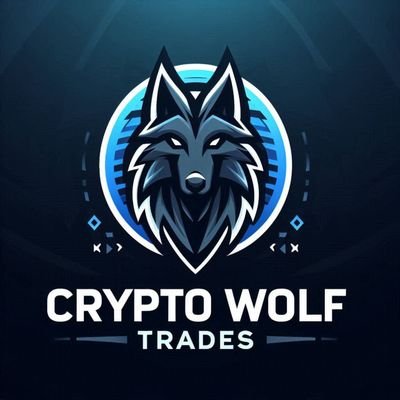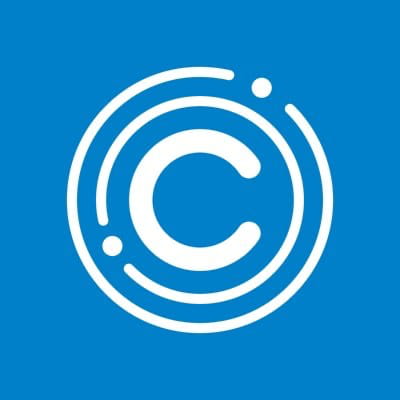


Giá Pencils ProtocolDAPP
Chuyển đổi DAPP sang VND
Bạn cảm thấy thế nào về Pencils Protocol hôm nay?
Về Pencils Protocol (DAPP)
Pencils Protocol (DAPP) là gì?
Pencils Protocol (DAPP) là một nền tảng tổng hợp tài chính phi tập trung (DeFi) được thiết kế để nâng cao việc quản lý và sử dụng tài sản blockchain. Là cổng vào gốc cho hệ sinh thái Scroll, nó tận dụng các công nghệ tiên tiến như bằng chứng zero-knowledge để cung cấp các dịch vụ DeFi có khả năng mở rộng, riêng tư và an toàn. Nền tảng tích hợp nhiều dịch vụ tài chính, bao gồm khai thác lợi suất, staking và đấu giá, cho phép người dùng tối đa hóa lợi nhuận từ tài sản trong khi vẫn duy trì mức độ bảo mật cao và tuân thủ quy định. Bằng cách cung cấp các giải pháp thống nhất cho staking thanh khoản và restaking, Pencils Protocol hướng tới việc trở thành một nhân tố chính trong lĩnh vực DeFi, đặc biệt là trong hệ sinh thái Scroll đang phát triển.
Ngoài các dịch vụ tài chính, Pencils Protocol giải quyết các thách thức chính mà các nền tảng DeFi truyền thống phải đối mặt, chẳng hạn như quyền riêng tư, khả năng mở rộng và tuân thủ các quy định như KYC (Know Your Customer) và AML (Chống rửa tiền). Bằng cách tập trung vào những lĩnh vực này, giao thức cung cấp một môi trường an toàn hơn để người dùng tham gia vào các hoạt động tài chính phi tập trung trong khi vẫn tuân thủ các yêu cầu pháp lý. Với cách tiếp cận sáng tạo về quản lý thanh khoản, hệ thống đấu giá và phần thưởng đa lớp, Pencils Protocol được định vị trở thành nền tảng hàng đầu cho người dùng DeFi tìm kiếm cả lợi suất cao và bảo vệ quyền riêng tư mạnh mẽ.
Pencils Protocol hoạt động như thế nào?
Pencils Protocol hoạt động thông qua sự kết hợp của các ngân quỹ (vaults), staking và nền tảng đấu giá, tất cả đều trong hệ sinh thái Scroll.
1. Ngân quỹ (Vaults): Đây là các hợp đồng thông minh nơi người dùng có thể nạp tiền điện tử. Giao thức sử dụng các ngân quỹ này để đầu tư và tái đầu tư tiền gửi của người dùng, thực hiện các chiến lược tối ưu hóa lợi nhuận được xác định trước như khai thác lợi suất, cho vay và cung cấp thanh khoản. Ngân quỹ giúp người dùng tạo ra lợi nhuận trong khi tự động xử lý staking, cân bằng lại danh mục đầu tư và các giao dịch.
2. Staking: Pencils Protocol cung cấp nhiều dịch vụ staking, bao gồm staking thanh khoản và restaking. Staking thanh khoản cho phép người dùng stake tài sản và kiếm phần thưởng trong khi vẫn giữ được tính thanh khoản thông qua các phiên bản token hóa của tài sản đã stake (ví dụ: stake ETH để nhận pETH). Restaking nâng cao lợi nhuận bằng cách cho phép tài sản được stake lại trên nhiều chuỗi khác nhau, mang lại lợi suất bổ sung.
3. Nền tảng đấu giá: Giao thức hỗ trợ nhiều loại đấu giá, bao gồm đấu giá kiểu Anh, đấu giá kiểu Hà Lan và đấu giá theo lô, cũng như các phương pháp sáng tạo như Liquidity Bootstrapping Pools (LBP) và Gradual Dutch Auctions (GDA). Điều này cho phép người dùng mua và bán tài sản kỹ thuật số như token gốc, NFT và tài sản trong thế giới thực. Hệ thống đấu giá của Pencils Protocol cũng tích hợp với việc tuân thủ KYC và AML để đảm bảo môi trường giao dịch an toàn và hợp pháp.
Thiết kế của giao thức nhấn mạnh vào quyền riêng tư và tuân thủ, sử dụng bằng chứng zero-knowledge để xác thực giao dịch và tích hợp các công cụ như Graph Convolutional Networks (GCNs) để giám sát và ngăn chặn các hoạt động bất hợp pháp như rửa tiền.
Token DAPP là gì?
Token tiện ích gốc của Pencils Protocol được gọi là DAPP. Token này đóng vai trò quan trọng trong hệ sinh thái của nền tảng bằng cách cung cấp một số chức năng chính:
● Quản trị: Chủ sở hữu DAPP có thể tham gia quản trị cộng đồng, bỏ phiếu về các quyết định quan trọng của giao thức, hướng phát triển và điều chỉnh lãi suất.
● Tài sản thế chấp: Người dùng muốn niêm yết tài sản trên nền tảng đấu giá của Pencils Protocol cần phải stake DAPP làm tài sản thế chấp để ngăn chặn các hoạt động độc hại. Nếu phát hiện hành vi sai trái, các token đã stake sẽ được phân phối lại cho cộng đồng.
● Phương tiện trao đổi: Trong hệ sinh thái Pencils, DAPP có thể được sử dụng để truy cập các chiến lược độc quyền, đòn bẩy cao hơn cho staking và các dịch vụ cao cấp khác. Người dùng cũng kiếm được phần thưởng bằng DAPP cho sự tham gia và hoạt động của họ trong nền tảng.
● Hệ thống điểm: Những người sử dụng sớm của nền tảng có thể kiếm được điểm Pencils, điểm này sẽ được ánh xạ thành quyền lợi trong DAPP. Những điểm này mở khóa nhiều lợi ích khác nhau, bao gồm quyền truy cập ưu tiên vào các phương pháp farming mới và các chính sách ưu đãi.
Kết luận
Pencils Protocol cung cấp một nền tảng toàn diện cho tài chính phi tập trung, mang đến cho người dùng cơ hội kiếm lợi nhuận, stake tài sản và tham gia vào các cuộc đấu giá sáng tạo. Với sự tập trung vào bảo mật, quyền riêng tư và tuân thủ, cùng với tiện ích do token DAPP cung cấp, Pencils Protocol được thiết lập để tạo ra một hệ sinh thái DeFi có khả năng mở rộng và hiệu quả cho những người đam mê. Các nhà đầu tư mới có thể khám phá nhiều cơ hội sinh lời trong khi vẫn được hưởng lợi từ khuôn khổ bảo mật và quản trị mạnh mẽ của nền tảng.
Báo cáo phân tích AI về Pencils Protocol
Giá Pencils Protocol tính bằng VND hôm nay
Lịch sử giá Pencils Protocol (VND)
 Giá thấp nhất
Giá thấp nhất Giá cao nhất
Giá cao nhất 
Giá cao nhất của Pencils Protocol là bao nhiêu?
Giá thấp nhất của Pencils Protocol là bao nhiêu?
Dự đoán giá Pencils Protocol
Giá của DAPP vào năm 2026 sẽ là bao nhiêu?
Giá của DAPP vào năm 2031 sẽ là bao nhiêu?
Câu Hỏi Thường Gặp
Giá hiện tại của Pencils Protocol là bao nhiêu?
Khối lượng giao dịch 24 giờ của Pencils Protocol là bao nhiêu?
Giá cao nhất mọi thời đại của Pencils Protocol là bao nhiêu?
Liệu tôi có thể mua Pencils Protocol trên Bitget?
Tôi có thể nhận được thu nhập ổn định khi đầu tư vào Pencils Protocol không?
Tôi có thể mua Pencils Protocol ở đâu với mức phí thấp nhất?
Tin tức về Pencils Protocol
Pencils Protocol nắm giữ theo mức độ tập trung
Địa chỉ Pencils Protocol theo thời gian nắm giữ

Giá Pencils Protocol toàn cầu
- 1
- 2
- 3
- 4
- 5
Hướng dẫn mua Pencils Protocol(DAPP)

Tạo tài khoản Bitget miễn phí

Xác minh tài khoản của bạn

Chuyển đổi Pencils Protocol sang DAPP
Giao dịch futures vĩnh cửu DAPP
Sau khi đã đăng ký thành công trên Bitget và mua USDT hoặc token DAPP, bạn có thể bắt đầu giao dịch phái sinh, bao gồm giao dịch futures và ký quỹ DAPP để tăng thu nhập của bạn.
Giá DAPP hiện tại là ₫765.48, biến động giá trong vòng 24 giờ là +25.00%. Nhà giao dịch có thể kiếm lợi nhuận bằng cách mở long hoặc short DAPP futures.
Tham gia giao dịch sao chép DAPP bằng cách theo dõi elite trader.
Niêm yết mới trên Bitget
Mua thêm
Tôi có thể mua Pencils Protocol (DAPP) ở đâu?
Mục video — xác minh nhanh, giao dịch nhanh

Chuyển đổi DAPP sang VND
Nguồn thông tin về DAPP
Xếp hạng Pencils Protocol
Bitget Insights




Tài sản liên quan
Thông tin bổ sung về Pencils Protocol
Tổng quan coin
Liên quan đến coin
Liên quan đến giao dịch

































